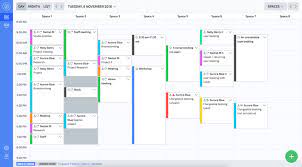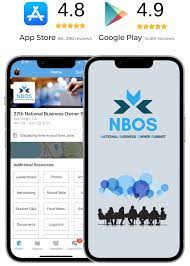The Importance of Meeting Room Management Solutions
Efficient meeting room management is essential for any organization to maximize productivity and streamline operations. With the increasing demand for flexible workspaces and remote collaboration, having effective meeting room management solutions in place has become more crucial than ever.
Meeting room management solutions encompass a range of tools and technologies designed to simplify the process of booking, scheduling, and utilizing meeting spaces. These solutions not only help organizations optimize their use of meeting rooms but also improve overall employee efficiency and satisfaction.
Key Benefits of Meeting Room Management Solutions:
- Improved Resource Utilization: By providing real-time visibility into room availability and occupancy, these solutions enable organizations to make better use of their meeting spaces.
- Streamlined Booking Process: With online booking portals and automated scheduling systems, employees can easily reserve meeting rooms without the hassle of manual coordination.
- Enhanced Collaboration: Integrated communication tools and interactive displays in meeting rooms facilitate seamless collaboration among team members, whether they are in the office or working remotely.
- Cost Savings: By optimizing the use of meeting rooms and reducing scheduling conflicts, organizations can lower operational costs associated with unused or underutilized spaces.
- Data-driven Insights: Meeting room management solutions provide valuable data analytics that help organizations track usage patterns, identify bottlenecks, and make informed decisions to improve resource allocation.
Choosing the Right Meeting Room Management Solution:
When selecting a meeting room management solution for your organization, consider factors such as scalability, integration capabilities with existing systems, user-friendliness, security features, and customer support. It’s essential to choose a solution that aligns with your specific needs and enhances your overall workplace efficiency.
Investing in a robust meeting room management solution is a strategic decision that can have a significant impact on your organization’s productivity and bottom line. By embracing modern technologies and best practices in meeting room management, you can create a more collaborative and dynamic work environment for your team.
“Navigating Meeting Room Booking Software: A Guide”
“Meeting Room Etiquette: The Essential Dos and Don’ts”
4. “Creating an Inviting Atmosphere
- What is meeting room solutions?
- What is a meeting room booking software?
- Do and don’ts for meeting room?
- How do I make my meeting room more inviting?
- What is meeting room management system?
What is meeting room solutions?
Meeting room solutions refer to a set of tools, technologies, and strategies designed to streamline the management and utilization of meeting spaces within an organization. These solutions encompass various features such as room booking systems, scheduling software, digital signage displays, and communication tools that aim to optimize the efficiency and effectiveness of meetings. By providing real-time visibility into room availability, enabling easy booking processes, fostering collaboration among team members, and offering data-driven insights, meeting room solutions play a crucial role in enhancing workplace productivity and facilitating seamless communication within modern work environments.
What is a meeting room booking software?
A meeting room booking software is a specialized tool designed to streamline the process of reserving and managing meeting spaces within an organization. This software allows users to check the availability of meeting rooms in real time, book rooms in advance, and schedule meetings with ease. By centralizing the booking process and providing a user-friendly interface, meeting room booking software helps organizations optimize their use of resources, reduce scheduling conflicts, and improve overall efficiency in managing meeting spaces.
Do and don’ts for meeting room?
When it comes to meeting room management solutions, understanding the do’s and don’ts for meeting rooms is essential for optimizing productivity and efficiency. Some key do’s include ensuring that meeting rooms are equipped with necessary technology and amenities, setting clear guidelines for room booking and usage, and fostering a culture of respect for shared spaces. On the other hand, some don’ts to avoid include double-booking rooms, leaving meeting spaces in disarray after use, and neglecting to communicate effectively with team members regarding room availability and scheduling. By following these do’s and don’ts, organizations can create a harmonious and productive environment that maximizes the value of their meeting room resources.
How do I make my meeting room more inviting?
Creating an inviting meeting room is essential to foster a productive and collaborative environment for your team. To make your meeting room more inviting, consider incorporating elements such as comfortable seating, natural light, greenery, and inspiring decor. Choose furniture that is both functional and aesthetically pleasing, ensuring that it promotes comfort and encourages engagement. Additionally, personalize the space with artwork, motivational quotes, or company branding to reflect your organization’s values and culture. By paying attention to details that enhance the ambiance and atmosphere of the meeting room, you can create a welcoming space that inspires creativity and communication among participants.
What is meeting room management system?
A meeting room management system is a comprehensive software solution designed to streamline the process of booking, scheduling, and monitoring meeting rooms within an organization. This system typically includes features such as real-time room availability status, automated reservation processes, integration with calendar apps, and analytics tools to track room utilization. By centralizing and automating these tasks, a meeting room management system helps organizations optimize their use of meeting spaces, reduce scheduling conflicts, enhance collaboration among team members, and ultimately improve overall operational efficiency.




